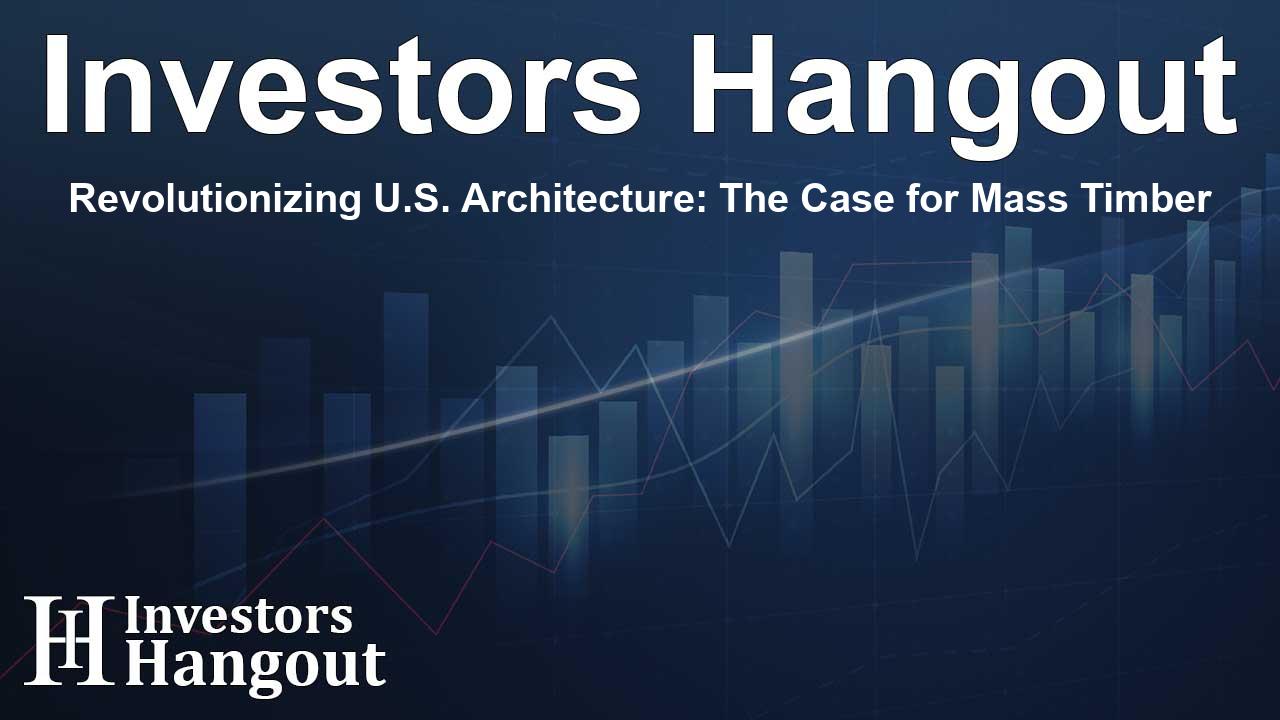Revolutionizing U.S. Architecture: The Case for Mass Timber

Revolutionizing U.S. Architecture: The Case for Mass Timber
The AEC industry is on the cusp of transformation, with architects and builders advocating for a shift towards mass-timber design and construction methods. Andrew Mack, a prominent architect with HFA Architecture + Engineering, emphasizes the urgency for new incentives, streamlined regulations, and enhanced infrastructure to invigorate wood innovation in U.S. architecture.
How Mass Timber Can Influence Design
In many parts of Europe, mass-timber structures have become synonymous with architectural beauty and warmth. Practices in countries like Sweden and Austria showcase timber buildings that are not only sustainable but pulsate with life and character. Mack envisions a similar evolution in the U.S., suggesting that mass timber should not just be a checkbox for carbon goals but a source of excitement in design.
In an insightful piece for Construction Business Owner, Mack articulates how the United States can enhance its approach to mass timber by learning from its European counterparts. The advancements made in the region, particularly in implementing cross-laminated timber (CLT) technology, result in buildings constructed with impressive speed and efficiency.
The Role of Education and Innovation
As part of a grant-funded project in Europe, Mack interviewed those behind the world's first timber skyscrapers. His journey includes educating a new generation of architects at the Illinois Institute of Technology. There, he emphasizes the importance of mass timber not just as a building material but as a versatile option that can redefine architectural designs.
Mack stresses that while Europe has excelled in adopting innovative building practices, the U.S. can advance too, provided there's a focus on developing local timber infrastructure. He advocates for initiatives that promote hybrid structures incorporating both timber and other materials like concrete and steel, creating designs that retain the aesthetic appeal of timber while addressing its limitations.
Strategic Areas for U.S. Construction
To capitalize on the benefits of mass timber, Mack highlights three focused areas of action:
Hybrid Construction is Key
Mack draws from his studies across countries like Norway and Switzerland, illustrating how hybrid structures can effectively combine timber with other materials. This method can mitigate the issues found in solid timber connections, such as excessive compressive movement under weight, showcasing the potential for innovation.
Building a Domestic CLT Network
The importance of establishing a domestic mass-timber industry cannot be overstated. Collaboration among manufacturers, educational institutions, and government bodies in Europe serves as a model for the U.S. Mack shares insights from the KLH factory in Austria, where producers and designers work in harmony, inspiring local innovations. Local wood sourcing could also play a critical role in enhancing the sustainability of mass-timber construction while supporting community initiatives.
Embracing Technology in Timber Design
Technological advancements are essential in propelling mass timber's creative possibilities. Mack references groundbreaking projects like the Sara Kulturhus in Sweden, where prefabricated wooden hotel rooms are designed for ease of assembly. In the United States, innovative companies like Fabric Mass Timber (FMT) are developing Building Information Modeling (BIM) tools to streamline the design and fabrication process. These technologies promise to allow for an array of intricate designs and customizing options in mass timber construction.
Mack envisions an industry poised to unleash mass timber's full potential, merging age-old building techniques with cutting-edge technology to create dynamic and beautiful structures. The success of adopting mass timber in the U.S. rests on how well industry stakeholders collaborate and innovate.
Frequently Asked Questions
What is mass timber construction?
Mass timber construction uses large wooden panels or beams to create buildings, emphasizing sustainability and aesthetic appeal.
Why is mass timber significant for the U.S. architecture?
It offers a sustainable alternative to traditional materials while providing unique design opportunities that can enhance building aesthetics.
What are hybrid structures?
Hybrid structures combine mass timber with other materials like concrete or steel, leveraging their strengths to overcome limitations associated with solid timber.
How can local sourcing impact mass timber construction?
Local sourcing supports communities economically, reduces transportation emissions, and utilizes readily available resources for construction.
What role does technology play in mass timber construction?
Technology aids the design and fabrication processes, enabling a broader range of creative structures and improving efficiency in construction.
About The Author
Contact Thomas Cooper privately here. Or send an email with ATTN: Thomas Cooper as the subject to contact@investorshangout.com.
About Investors Hangout
Investors Hangout is a leading online stock forum for financial discussion and learning, offering a wide range of free tools and resources. It draws in traders of all levels, who exchange market knowledge, investigate trading tactics, and keep an eye on industry developments in real time. Featuring financial articles, stock message boards, quotes, charts, company profiles, and live news updates. Through cooperative learning and a wealth of informational resources, it helps users from novices creating their first portfolios to experts honing their techniques. Join Investors Hangout today: https://investorshangout.com/
The content of this article is based on factual, publicly available information and does not represent legal, financial, or investment advice. Investors Hangout does not offer financial advice, and the author is not a licensed financial advisor. Consult a qualified advisor before making any financial or investment decisions based on this article. This article should not be considered advice to purchase, sell, or hold any securities or other investments. If any of the material provided here is inaccurate, please contact us for corrections.
